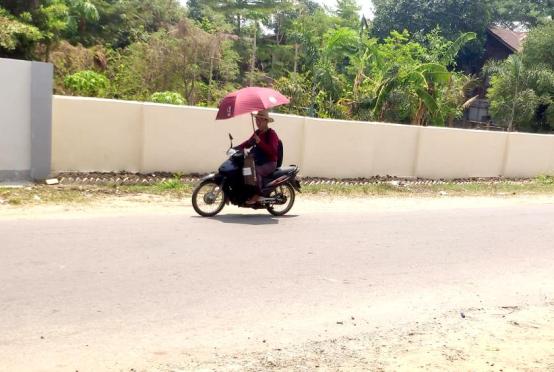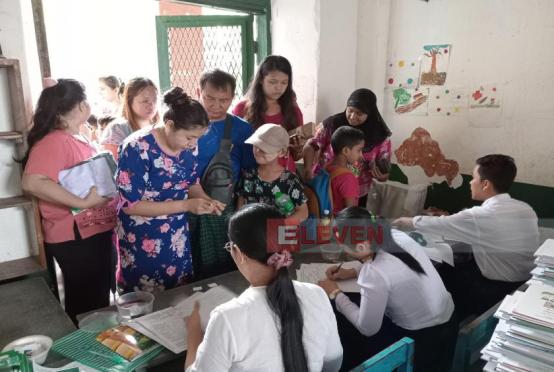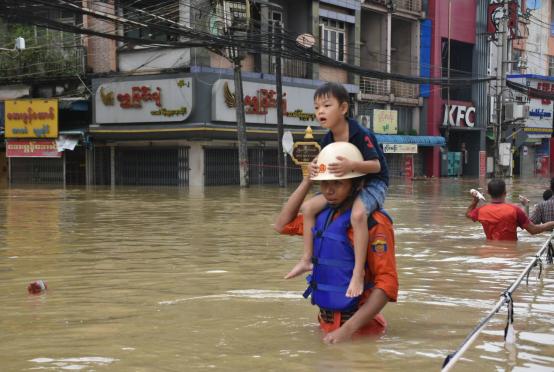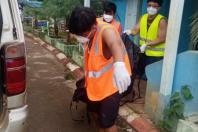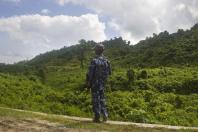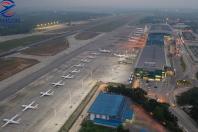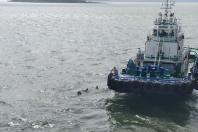by News Desk
TOKYO (The Japan News/ANN) - More realistic images of torrential rain disasters through virtual reality (VR) and other technology, are being produced by newly developed devices, in a bid to convey the seriousness of the threat.
Newly developed devices are producing more realistic images of torrential rain disasters through virtual reality (VR) and other technology, in a bid to convey the seriousness of the threat and encourage people to evacuate quickly when such incidents occur.
Torrential rain has caused enormous damage in a series of cases, so the creators of these devices hope disaster simulation will help people recognize that disasters can affect them at any time.
Making it clear
As residents use up time preparing to evacuate, a road floods with muddy water, making it impossible to leave the house. As they flee to the second floor, a landslide occurs behind the house with a roar.
Rikei Co., a Tokyo-based information system company, developed VR software that uses computer graphics to reproduce images of the torrential rain disaster in western Japan in July last year.
In April this year, the company completed an eight-minute video based on the testimony of disaster victims in Higashi-Hiroshima, Hiroshima Prefecture, in which 19 people lost their lives, including deaths indirectly related to the disaster. Hiroshima University and the fire department at Higashi-Hiroshima city government cooperated in making the video.
Viewers wear dedicated goggles, and images move in accordance with the direction they are facing, making viewers feel as if they are actually there.
The devices are used in lectures given on request at a junior high school in the city, among other occasions.
“We want many residents to experience this, so they don’t think, ‘I’ll be OK,” an official of the fire department said.
In response to requests from other local governments, the company is also developing VR software that shows how urban areas will be flooded.
The Shimodate River Office of the Land, Infrastructure, Transport and Tourism Ministry in Chikusei, Ibaraki Prefecture, reproduced through VR the torrential rain in the Kanto and Tohoku regions in September 2015 and posted it on YouTube in January this year. The three-minute video includes a scene of flooding houses in Joso in the prefecture, where a bank of the Kinugawa river collapsed.
There are also efforts using augmented reality (AR) technology that superimposes imaginary images on real landscapes.
Tomoki Itamiya, a professor at Aichi University of Technology, has developed a smartphone app that makes it look on the screen as if the people and buildings around the user have been submerged. He lends out dedicated smartphones on request.
Since Itamiya developed it in 2015, about 25,000 people across the country have tried the app. An expert in image processing, Itamiya said, “If people realize what could happen to them, their ‘evacuation switch’ will be turned on during disasters.”

